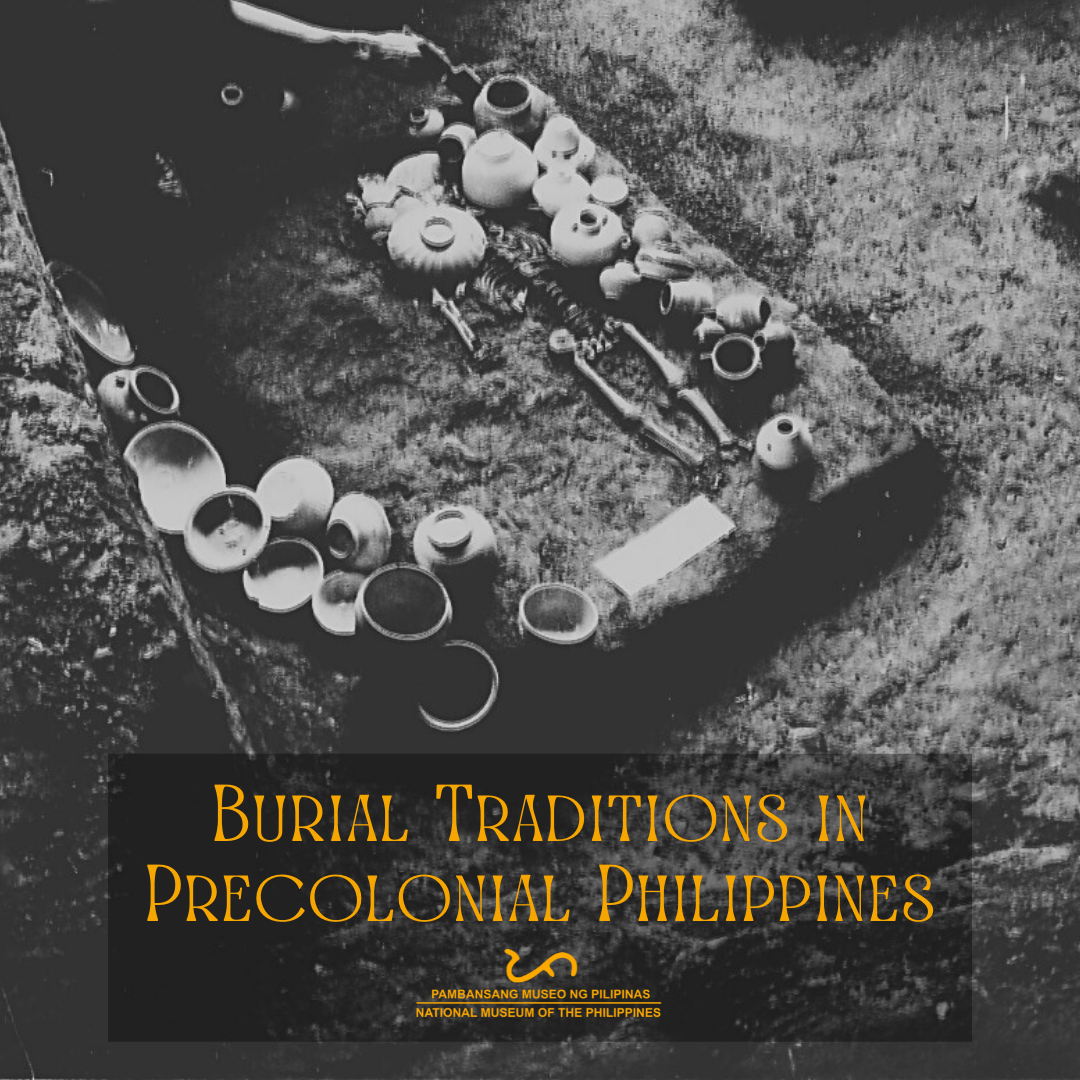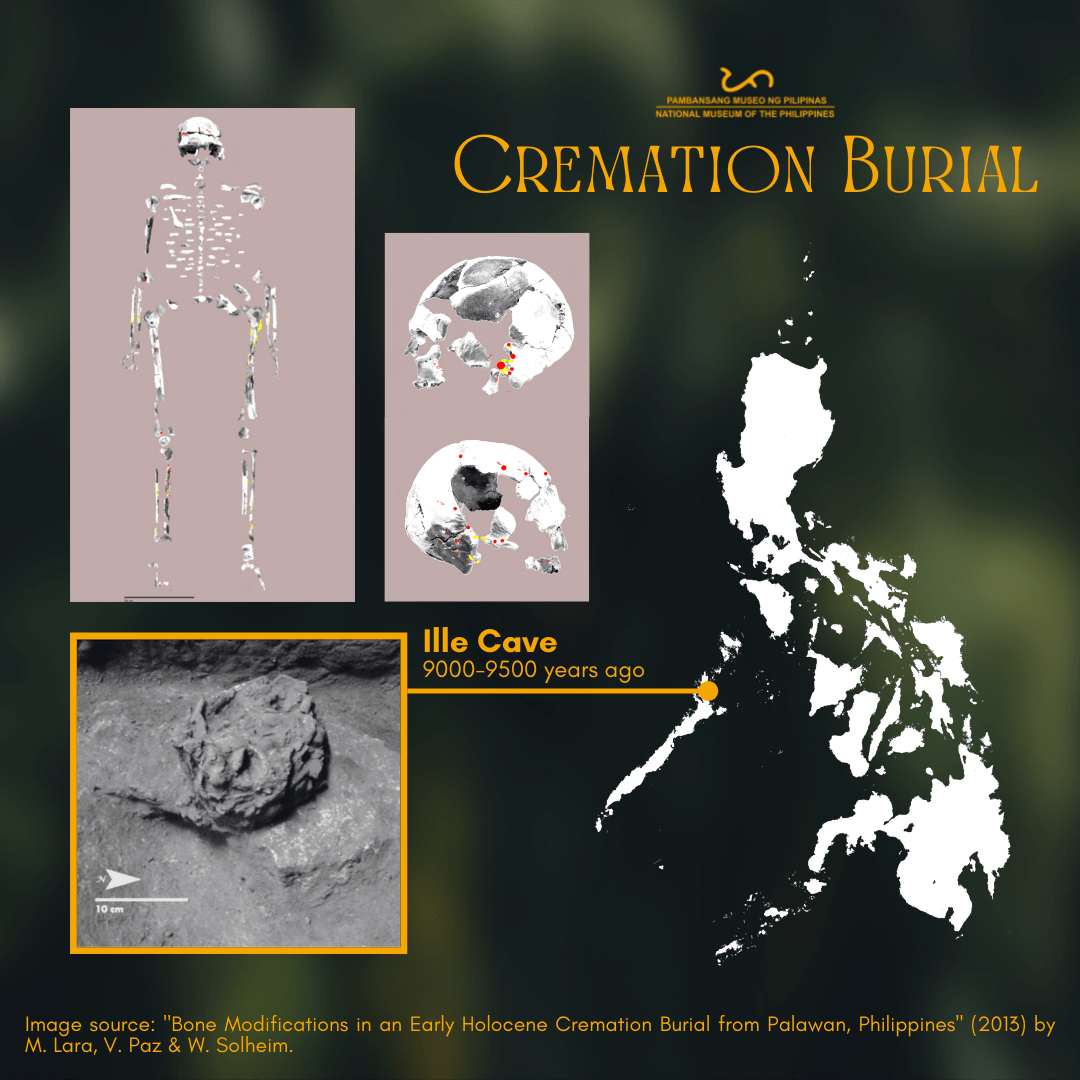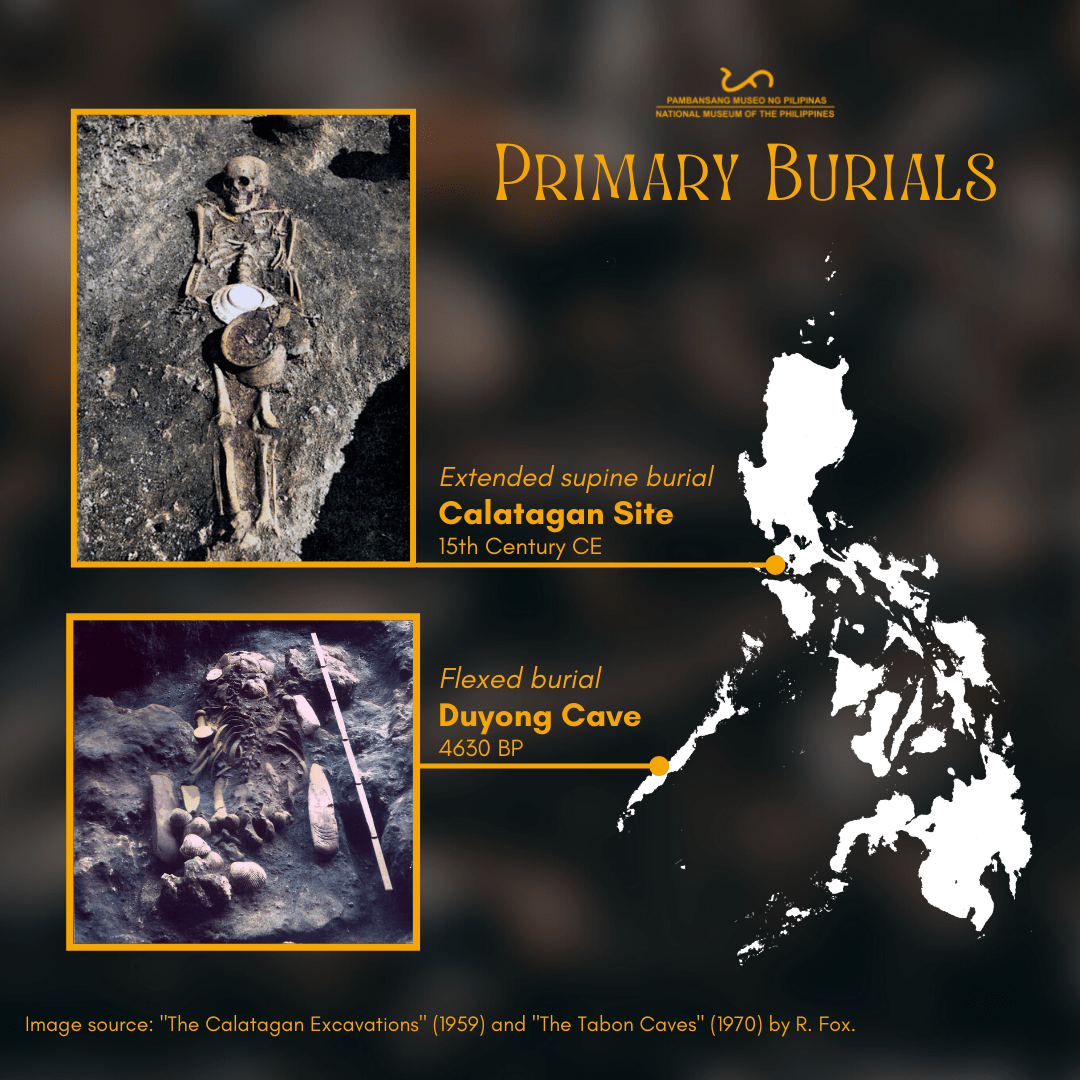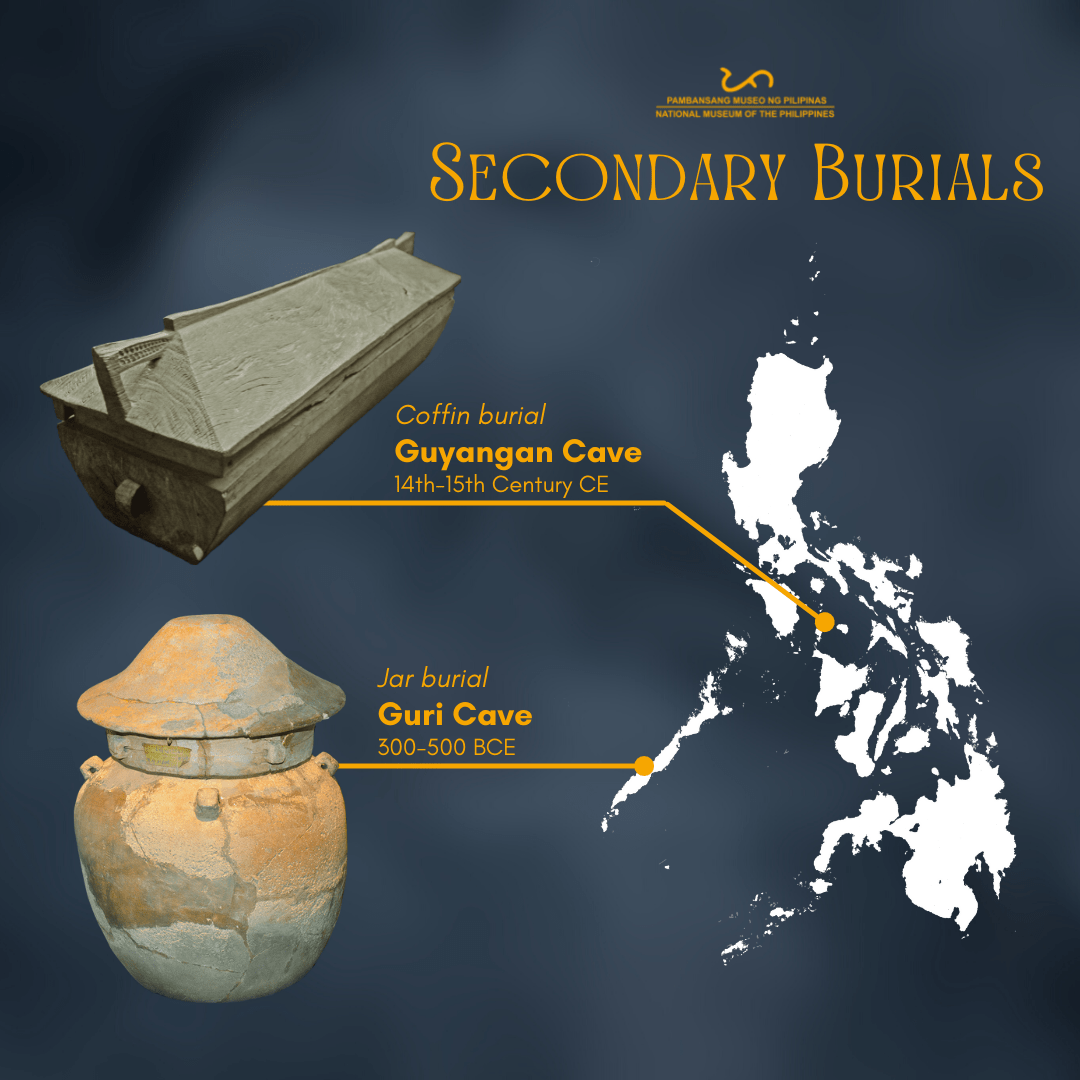Pre-colonial burial traditions
In the observance of #Undas2021, our #TrowelTuesday will be featuring mortuary concepts in the context of Philippine archaeology for the entire month of November. Today, we are highlighting some distinctive burial practices and traditions in our country.
Have you visited your dearly departed in the cemetery, or sementeryo, himlayan, or campo santo as we locally call it?
Though many associate the idea of burial grounds with the modern-day cemetery, our precolonial ancestors had sacred places for the dead and funerary practices and traditions before the introduction of Christianity and Islam in our country.
CREMATION BURIAL. A cremation burial dated about 9500-9000 years – the earliest directly dated in the Southeast Asian region – was found in Ille Cave, Palawan. The compact charred stack of organized bones showed evidence of disarticulation, fragmentation, burning, and re-fragmentation before interment in a container.
PRIMARY BURIAL. Initial burials that involve laying the remains on the ground or in a container are called primary burials. The earliest known flexed burials in the archipelago are those from Bubog Cave in Ilin Island in Mindoro dated 5000 years ago, and Duyong Cave and Sa’gung Rockshelter (4 of 11 burials) in Palawan dated about 4500-4000 years ago; none bearing pottery yet. Flexed burial position, along with seated burial, cremation, and mutilation, are part of complex burial practices that emerged in Island Southeast Asia after about 12,000 years ago.
Burial in extended supine (lying on the back) is probably the most familiar and common interment position. Click on the links to learn about the notable 1000-year old sarcophagus burial tradition in Mulanay, Quezon Province (https://tinyurl.com/MountKamhantikSite) and an ongoing excavation on settlement-burial sites in San Remigio, Cebu involving primary burials (https://tinyurl.com/NorthCebuArchaeologicalProject).
SECONDARY BURIAL. A period after the primary burial, it was customary to transfer the bone and teeth remains into burial containers. Earthenware burial jars from open-air and cave burial sites dated as early as the Neolithic Period were found to be mainly used for secondary burial, and to bury infants. Jar burial tradition seemed to be prevalent along or near coastal regions, though it was also observed in other places even until relatively recent times.
A Southeast Asian tradition of interring the dead in boat-shaped coffins is evidenced in several 12th-15th-century Philippine archaeological sites as previously featured (https://tinyurl.com/BantonBoatCoffin, https://tinyurl.com/ButuanCoffinBurials).
Your #NationalMuseumPH has re-opened its doors to the public following the IATF Guidelines for Alert Level 3 in Metro Manila. Book your slot or explore our collections and exhibitions through this website.
#BurialTraditions
#ArchaeologyOfTheDead
#MuseumFromHome
#VictoryAndHumanity
#YearOfFilipinoPrecolonialAncestors
Text by Marian Reyes and posters by Timothy James Vitales | NMP Archaeology Division
© National Museum of the Philippines (2021)
inquiry@nationalmuseum.gov.ph
(+632) 8298-1100




